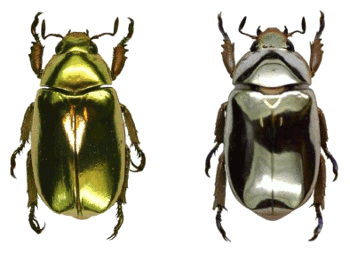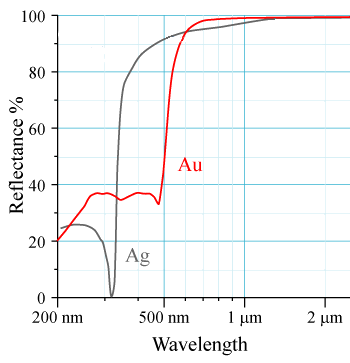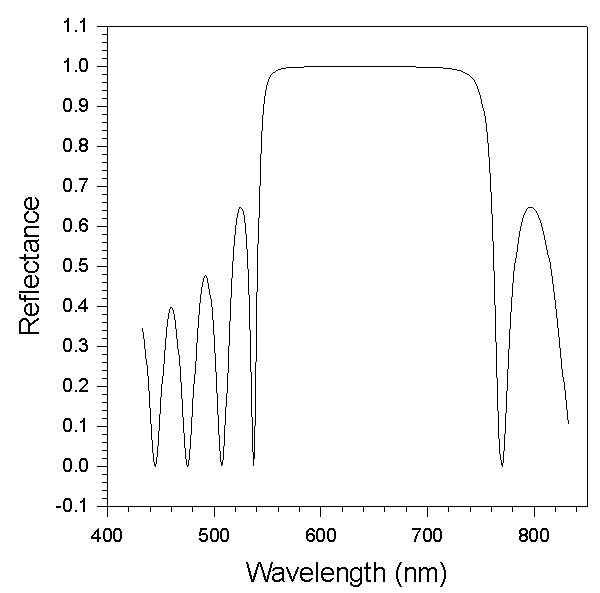Metallic Beetles
May 2, 2011
There was an interesting
catch phrase on
Monty Python's Flying Circus.
John Cleese, sitting behind a desk, would say, "...And now, for something completely different," followed by a ridiculous phrase, such as, "A man with a
tape recorder up his nose." There was also a Monty Python film by the name, "
And Now for Something Completely Different."
Humans disdain the regular and crave novelty. This explains the instant popularity of
The Beatles and the
British Invasion of the 1960s. Sure,
Rockabilly was entertaining, and very American, but
all things have their season. Not content with their original popular style, The Beatles reinvented themselves with each subsequent album release.
The Beatles dissolved as a group just as
Heavy Metal hit the scene. It would have been interesting to have heard their response to this
musical genre. Since this article is about
metallic beetles (as in
Animalia Arthropoda Insecta Pterygota Neoptera Endopterygota Coleoptera), how could I resist such a contrived lead-in?
An interesting article was just published in the inaugural issue of
Optical Materials Express, an
open-access journal published by
The Optical Society (OSA, also known as The Optical Society of America). The paper, "Visible light reflection spectra from cuticle layered materials," looks at the reason behind the
gold and
silver coloration of the two beetles, C. limbata (silver) and C. aurigans (gold).[1-3] A photograph of these two appear below, courtesy of OSA.

The beetles, Chrysina aurigans (gold) and Chrysina limbata (silver).
Photograph by Eduardo M. Libby via OSA)
In order to understand why the beetles are colored gold and silver, we need to know what it means for something to be "silver" or "gold." There's no better reference than the actual metals themselves. The
spectra below tell the whole story. These metals essentially reflect all
wavelengths above certain values, and absorb all wavelength below. The critical wavelength for gold is about 500
nm. For silver it's about 300 nm, although any value sufficiently below the
visible spectrum would work.

Reflectance spectra of silver and gold in the visible and near-IR.
(Spectra by Bob Mellish via Wikimedia Commons, modified.)
How would you simulate such spectra without recourse to any silver or gold? Spectral features like these are quite common in
optics, since they are found in
dielectric mirrors. These mirrors are formed from alternating stacks of low and high
refractive index materials. Not only can dielectric mirrors be made wavelength selective, forming
notch and
bandpass filters, they are also much more reflective than a metal mirror.
One material available to beetles is
chitin, a complex
sugar containing nitrogen. Chitin is responsible for the hard shells of insects, and those of sea creatures such as
lobster and
shrimp. Chitin has a refractive index of between 1.7 and 2.0 in the visible wavelengths.
An available low refractive index material is air, which has a refractive index of about 1.0. A multilayer stack of chitin and air of appropriate thicknesses will produce the observed spectra. The
cuticle of these beetles is 10
micrometers thick, and it contains about seventy chitin layers.
Close examination of the beetle spectra shows that the beetle mirrors are
chirped; that is, the layers are not of uniform thickness. Chirped mirrors allow a wider bandpass response. This mirror structure on the beetle shell has been confirmed by
electron microscopy. It's presumed that the silver and gold coloration has an
evolutionary advantage in
camouflaging the beetles in their
tropical rainforest environment.
This
fundamental study may have applications. William Vargas, an author of the study, thinks there may be an application in providing decorative metallic coatings that contain no metal. There might be an
environmental benefit, since everything ends up in the trash, eventually.
About a decade ago, I worked with dielectric mirrors. The figure below is an example spectrum of a passband mirror centered around the red line of a helium-neon laser. In this case,
tantalum oxide (Ta
2O
5) was used as the high refractive index material (n ≈ 1.80), and
silica (SiO
2) was used as the low refractive index material (n ≈ 1.52)

Calculated reflectance of a dielectric mirror formed from twenty alternating layers of tantalum oxide and silica.
References:
- Angela Stark, "Beetle Bling: Researchers Discover Optical Secrets of 'Metallic' Beetles," Press Release of The Optical Society, April 25, 2011
- Spotlight on Optics -Highlighted Articles From OSA Journals: Visible light reflection spectra from cuticle layered materials
- Cristian Campos-Fernández, Daniel E. Azofeifa, Marcela Hernández-Jiménez, Adams Ruiz-Ruiz, and William E. Vargas, "Visible light reflection spectra from cuticle layered materials," Opt. Mater. Express, vol. 1, no. 1 (April 22, 2011), pp. 85-100.
Permanent Link to this article
Linked Keywords: Catch phrase; Monty Python's Flying Circus; John Cleese; tape recorder; And Now for Something Completely Different; The Beatles; British Invasion; Rockabilly; Turn! Turn! Turn!; all things have their season; Heavy Metal music; musical genre; metallic; beetles; Animalia; Arthropoda; Insecta; Pterygota; Neoptera; Endopterygota; Coleoptera; Optical Materials Express; open-access journal; The Optical Society; gold; silver; spectrum; wavelength; nanometer; nm; visible spectrum; Bob Mellish; Wikimedia Commons; optics; dielectric mirror; refractive index; band-stop filter; notch filter; bandpass filter; chitin; sugar; lobster; shrimp; cuticle; micrometer; chirped; electron microscopy; evolutionary advantage; camouflage; tropical rainforest; pure research; fundamental study; environmental; tantalum pentoxide; tantalum oxide; silicon dioxide; silica.